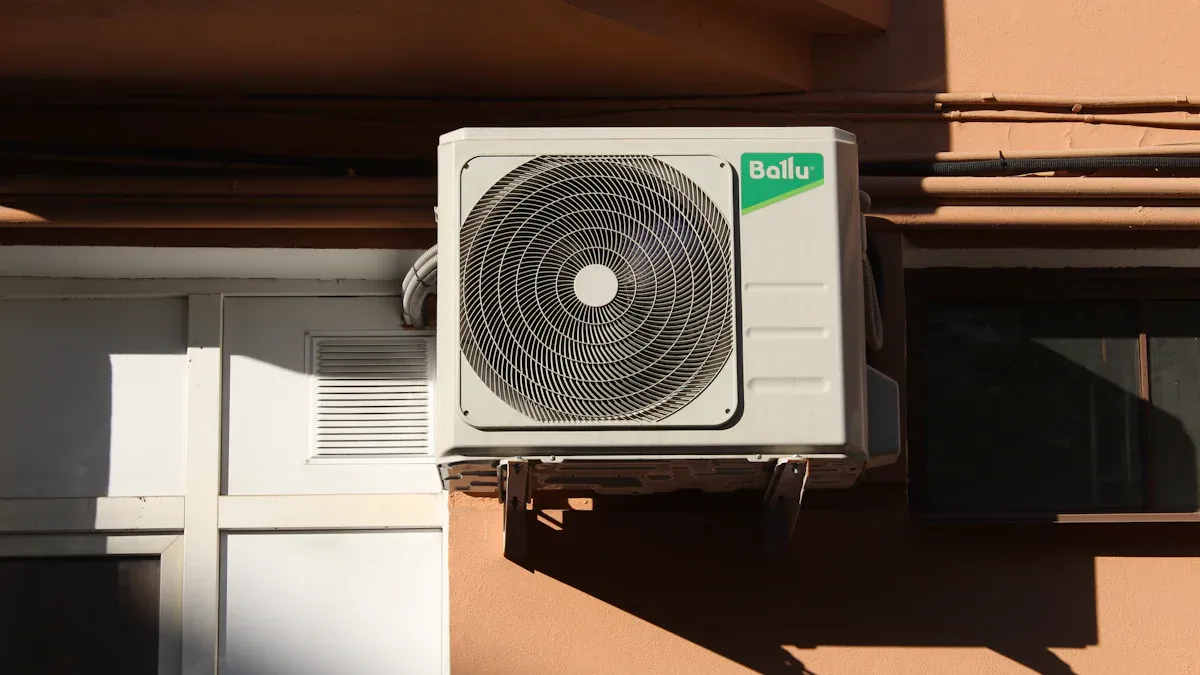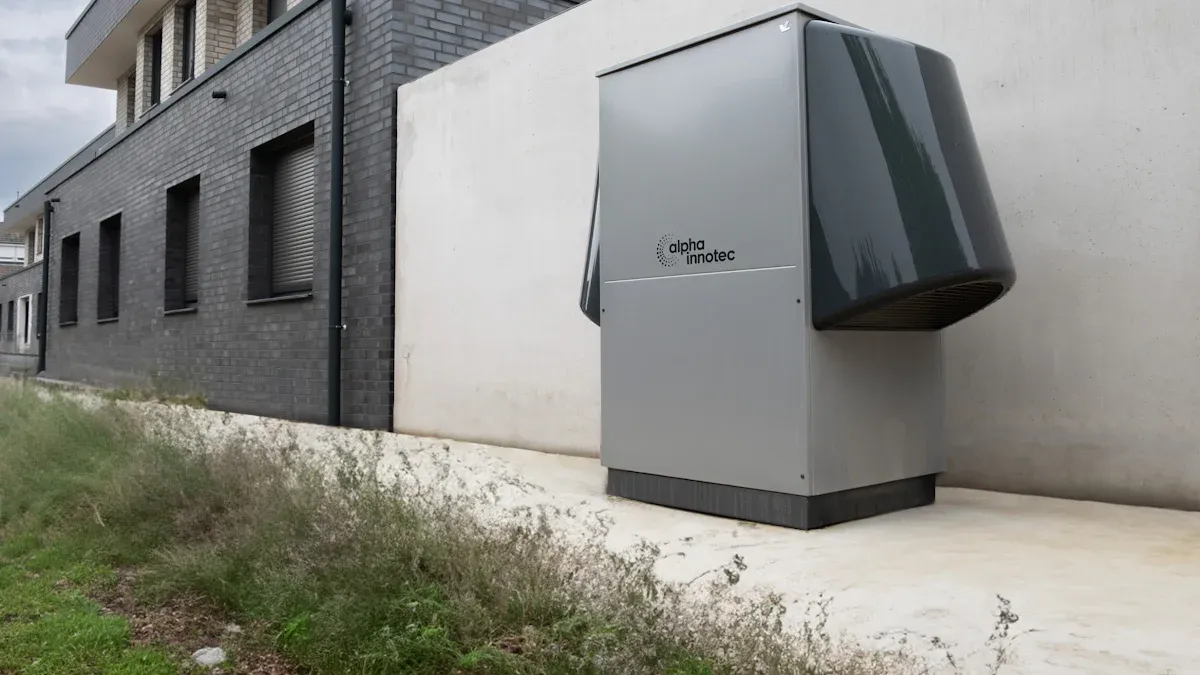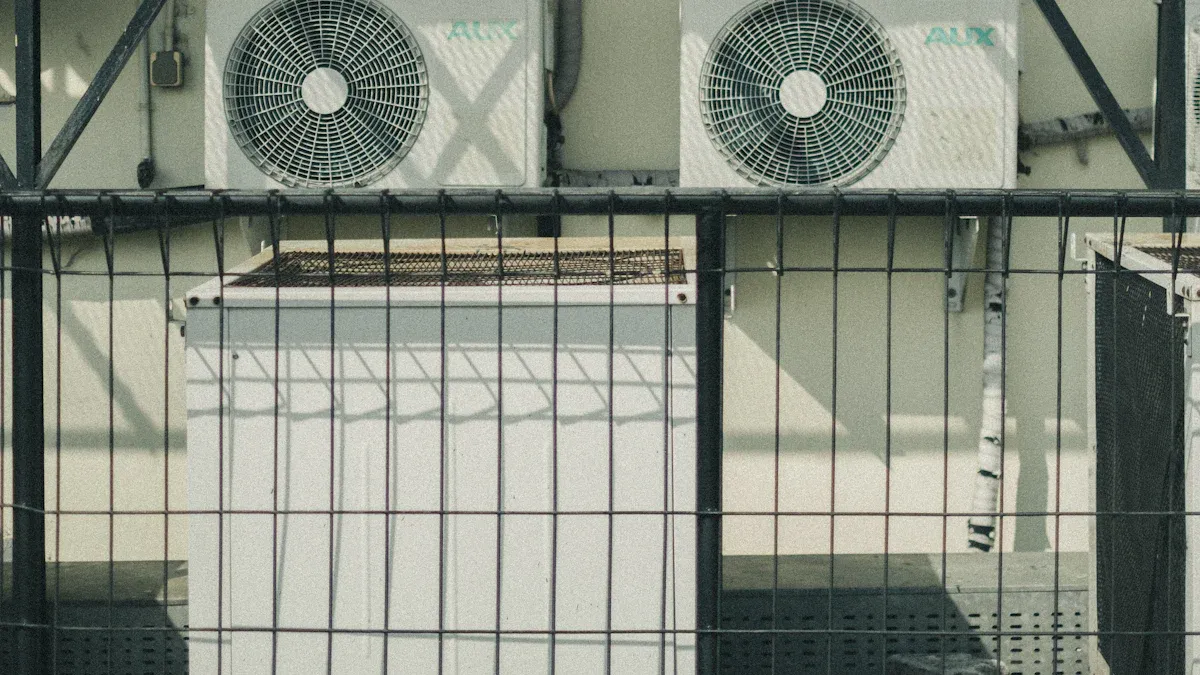How Condenser Layout Optimization Boosts Refrigerator Efficiency

I always emphasize the importance of condenser layout optimization when discussing refrigerator efficiency. A well-arranged condenser layout ensures effective heat dissipation, minimizing energy usage while maintaining optimal cooling. For instance, a wire tube condenser enhances heat exchange, allowing refrigerators to operate more efficiently. This optimization also reduces wear on components, prolonging the appliance's lifespan.
Key Takeaways
- Improving condenser design uses less energy, cutting utility costs.
- Good airflow and spacing help cool better, keeping food fresh.
- Taking care of the condenser makes it last longer and saves money.
The Role of the Condenser in Refrigeration

What is a Wire Tube Condenser?
I often describe the wire tube condenser as a marvel of engineering in refrigeration systems. It features coiled copper tubing, which excels in thermal conductivity, ensuring rapid heat transfer. Surrounding these tubes are tightly wound metal wires that enhance structural stability and increase the surface area for heat dissipation. This design allows ambient air to flow over the tubes, cooling the refrigerant gas until it condenses into a liquid. The wire tube condenser's efficiency and durability make it a preferred choice for modern refrigeration systems. Companies like Ningbo Senjun New Materials Co., Ltd. specialize in producing these condensers, contributing significantly to advancements in refrigeration technology.
How condensers facilitate heat dissipation
The condenser plays a critical role in maintaining refrigeration efficiency. It cools and condenses refrigerant vapor into a liquid, releasing heat absorbed from the environment. This process ensures the system maintains consistent temperatures. Key principles of heat transfer, such as temperature gradients and surface area optimization, govern this process. For example, innovative designs using vapor compression refrigeration cycles have shown improved heat dissipation compared to traditional methods. Proper maintenance of the condenser is essential. A malfunctioning unit can increase energy consumption, forcing the system to work harder and raising utility costs.
Common condenser designs and their impact on performance
Condenser designs vary widely, each impacting performance differently. Wire tube condensers, for instance, stand out for their efficiency and durability. Their design maximizes airflow and heat exchange, making them ideal for appliances like refrigerators and freezers. Plate condensers, on the other hand, offer compactness but may require more maintenance. Advances in materials and technology have further improved condenser designs. For example, copper-aluminum fin heat exchangers provide enhanced thermal conductivity and corrosion resistance. These innovations, championed by companies like Ningbo Senjun New Materials Co., Ltd., ensure refrigeration systems operate efficiently while reducing energy consumption.
Optimizing Condenser Layout for Maximum Efficiency

Placement and spacing considerations
I always emphasize the importance of proper placement and spacing when optimizing condenser layouts. The location of the condenser significantly impacts its efficiency. For instance, placing the condenser above the refrigerator cabinet minimizes undesirable heat transfer, which enhances energy performance. Adequate spacing between the condenser and surrounding components ensures unrestricted airflow, which is critical for effective heat dissipation.
To illustrate this, consider the following design guidelines:
| Evidence Type | Description |
|---|---|
| Condenser Location | Locating the condenser above the cabinet can reduce undesirable heat transfer, enhancing energy performance. |
| Evaporator Design | Various designs like wraparound or hanging can maximize internal volume and surface area, improving efficiency. |
| Enhanced Surface Area | Increasing surface area improves heat transfer efficiency, although it may lead to higher pressure drops. |
These principles guide the design of efficient refrigeration systems, ensuring optimal performance and energy savings.
Enhancing airflow and ventilation
Airflow and ventilation play a pivotal role in condenser efficiency. I have observed that enhancing airflow reduces the workload on the condenser, leading to lower energy consumption. For example, using backward-curved fans instead of forward-curved ones can reduce power usage by up to 15%, while achieving peak efficiencies of 75% to 80%. Additionally, reducing air velocity by 50% can lower pressure drops by 75%, significantly decreasing motor power requirements.
Here’s a summary of key findings related to airflow improvements:
| Evidence Description | Key Findings |
|---|---|
| Fan Efficiency Impact | A 50% reduction in air velocity leads to a 75% reduction in pressure drop, significantly lowering motor bhp requirements. |
| Fan Type Comparison | Backward curved fans can use up to 15% less power than forward curved fans, with peak efficiencies of 75% to 80% compared to 65% to 70%. |
| Energy Consumption | More efficient fans and reduced air pressure drop can lower energy consumption, offsetting initial equipment costs. |
By focusing on these aspects, I ensure that the condenser operates efficiently, even under demanding conditions.
Material and design innovations, including wire tube condensers
Material and design innovations have revolutionized condenser technology. I have seen how advanced materials and cutting-edge designs, such as wire tube condensers, improve thermal efficiency and durability. Wire tube condensers, in particular, stand out for their ability to maximize heat transfer while maintaining structural integrity. Companies like Ningbo Senjun New Materials Co., Ltd. lead the way in developing these innovative solutions.
Recent advancements include:
- Integration of advanced materials for improved thermal efficiency.
- Use of corrosion-resistant alloys and advanced coatings to enhance durability.
- Implementation of IoT capabilities for real-time monitoring and predictive maintenance.
- Shift towards sustainable refrigerants, requiring specialized condenser designs.
- Modular and customizable designs tailored for specific applications.
These innovations not only improve energy efficiency but also align with environmental sustainability goals.
Regular maintenance for sustained performance
Regular maintenance is essential for sustaining condenser performance. I always recommend routine checks to ensure the system operates at peak efficiency. Maintenance prevents major breakdowns, reduces downtime, and extends the lifespan of the appliance. For example, cleaning the condenser coils and inspecting for wear and tear can significantly lower energy consumption.
The benefits of regular upkeep include:
- Maximized operational life of equipment.
- Minimized downtime and unexpected failures.
- Consistent performance, safety, and efficiency.
The following table highlights the advantages of regular maintenance:
| Benefit | Description |
|---|---|
| Improved Efficiency | Regular maintenance leads to reduced energy consumption and costs. |
| Extended Lifespan | Routine checks prevent major breakdowns, prolonging the chiller's life. |
| Reduced Downtime | Inspections minimize unexpected failures, ensuring continuous operation. |
| Enhanced Performance | Consistent maintenance ensures optimal cooling performance for processes. |
By prioritizing maintenance, I ensure that refrigeration systems deliver reliable and efficient performance over their operational lifespan.
Benefits of Condenser Layout Optimization
Lower energy consumption and utility costs
Optimizing the condenser layout directly reduces energy consumption. I have observed that efficient designs minimize heat buildup, allowing the refrigerator to maintain consistent cooling with less effort. This efficiency translates into lower utility bills for users. For example, a well-placed wire tube condenser ensures maximum heat dissipation, reducing the workload on the compressor. This not only saves energy but also decreases operational costs over time.
Improved cooling performance and food preservation
A properly optimized condenser layout enhances cooling performance. I’ve seen how improved airflow and spacing allow the system to maintain stable temperatures, which is crucial for preserving food quality. When the condenser operates efficiently, the refrigerator can cool faster and more evenly. This prevents temperature fluctuations that might spoil perishable items. By ensuring optimal heat exchange, designs like wire tube condensers contribute to better food preservation and overall appliance reliability.
Extended appliance lifespan
Condenser layout optimization also extends the lifespan of refrigeration systems. I always emphasize that reducing strain on components, such as the compressor, prevents premature wear and tear. Regular maintenance, combined with an efficient layout, ensures the system operates smoothly for years. This not only saves money on repairs but also delays the need for a costly replacement. A well-maintained condenser is an investment in the longevity of the appliance.
Environmental advantages of energy-efficient designs
Energy-efficient condenser designs offer significant environmental benefits. I’ve noticed that these systems reduce carbon emissions by consuming less electricity. The following table highlights some key advantages:
| Advantage | Description |
|---|---|
| Reduced Carbon Emissions | Energy-efficient condensers help in lowering Scope 1 emissions, contributing to sustainability. |
| Improved Heat Transfer | Regular maintenance and upgrades enhance heat transfer efficiency. |
| Greater Overall Efficiency | New designs maximize cooling performance while using less electricity. |
By adopting advanced materials and innovative designs, manufacturers like Ningbo Senjun New Materials Co., Ltd. are leading the way in creating sustainable refrigeration solutions. These efforts align with global goals to reduce environmental impact while maintaining high performance.
Optimizing the condenser layout transforms refrigerator performance. I’ve seen how focusing on placement, airflow, and regular maintenance leads to significant energy savings and improved cooling efficiency.
Companies like Ningbo Senjun New Materials Co., Ltd. drive innovation in refrigeration systems. Their advanced wire tube condensers set new standards for durability and thermal efficiency, ensuring sustainable and high-performing solutions for modern appliances.
By adopting these strategies, users can enjoy long-lasting, energy-efficient refrigeration systems.
FAQ
What is the primary purpose of condenser layout optimization?
The main goal is to enhance heat dissipation, reduce energy consumption, and improve the refrigerator's overall efficiency. This ensures better cooling performance and longer appliance lifespan.
How does Ningbo Senjun New Materials Co., Ltd. contribute to refrigeration technology?
Ningbo Senjun specializes in advanced wire tube condensers and copper-aluminum fin heat exchangers. Their innovations improve thermal efficiency and durability, setting new standards in refrigeration systems.
Can regular maintenance impact condenser efficiency?
Absolutely! Routine maintenance, like cleaning coils and inspecting components, ensures optimal performance. It also reduces energy usage and prevents unexpected breakdowns.
💡 Tip: Always follow the manufacturer's maintenance guidelines to maximize your refrigerator's efficiency and lifespan.


















